NVIDIA GTC 2014 Opening Keynote Highlights
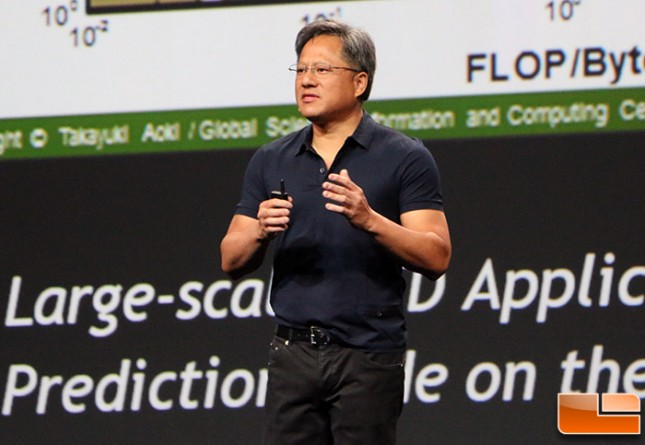
More than 3,500 people will be attending NVIDIA’s GPU Technology Conference (GTC) this week in San Jose and will be attending the headline keynotes and over 500 sessions on the latest scientific discovery and innovations. Jen-Hsun Huang was the speaker today and he welcomed the attendees and told them how high performance computing is thriving and that NVIDIA GPUs are powering many of those systems. Back in 2010 NVIDIA GTC mainly about HPC / Supercomputing, but now in 2014 it includes Energy Exploration, Life Science & Genomics, Molecular Dynamics, Big Data Analytics, Machine Learning and Comptuer Vision. GTC was originally formed to help broaden the appeal of Tesla and CPU/GPU synergy is still key today.
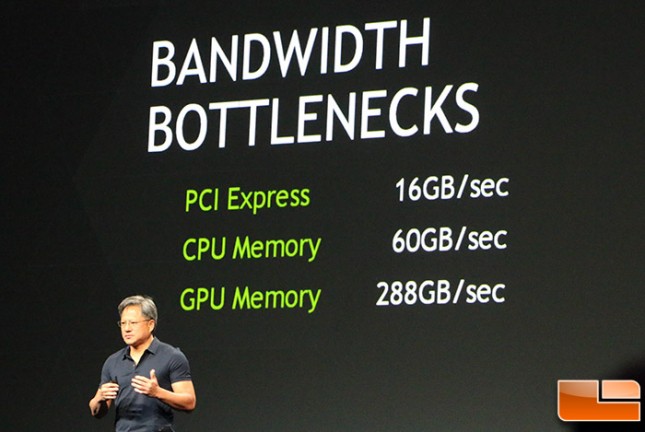
Jen-Hsun then spoke about the bandwidth bottlenecks that are still present on computers today. He highlighted that PCI-Express is only 16GB/sec, local GPU memory is currently running at 288GB/sec and that CPU memory is just 60GB/sec.
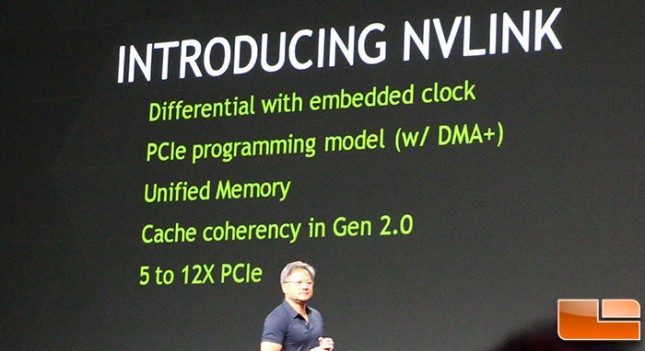
To help with the bandwidth issue NVIDIA came up with NVLink. NVLink is a chip to chip communication bus that will be 5-12 times faster than PCIe. This will solve the GPU to GPU communication issue and unlock the door to many things in the future. It appears that NVLink uses the PCIe programming model, so it looks like NVIDIA will be doing some heavy adjustments to PCIe for this feature announcement.
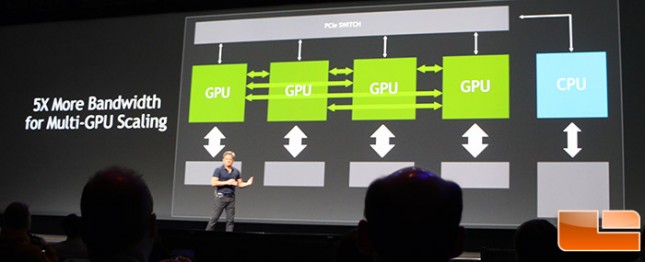
Next up NVIDIA needs to increase the memory bandwidth on the card itself. The looked at going wider on the memory bus as well as going faster, but they run into package size and power restraints when going those directions.

The solution that NVIDIA came up with for this is 3D packaging. This is where you basically stack memory with the chip vertically. NVIDIA 3D memory will be using Through Siicon Vias (TSVs) to connect the DRAM chips through each other, which basically means there are holes in the DRAM with really thin wire connecting them. Pretty cool sounding technology!
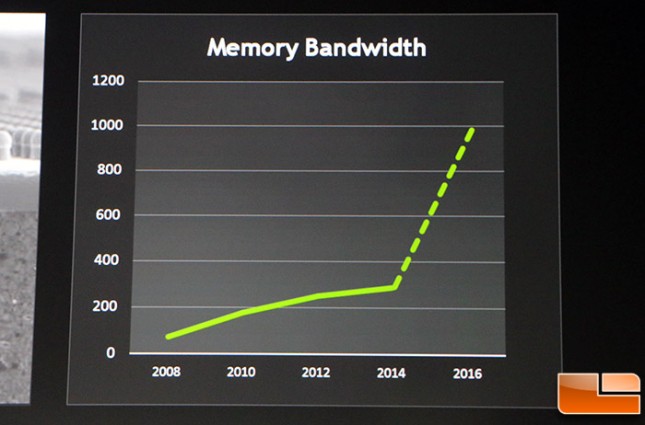
NVIDIA shows that in a couple of years, using 3D Stacked memory will increase GPU memory bandwidth from the current 288GB/s up to 1000MB/s on future GPUs that are coming around 2016.
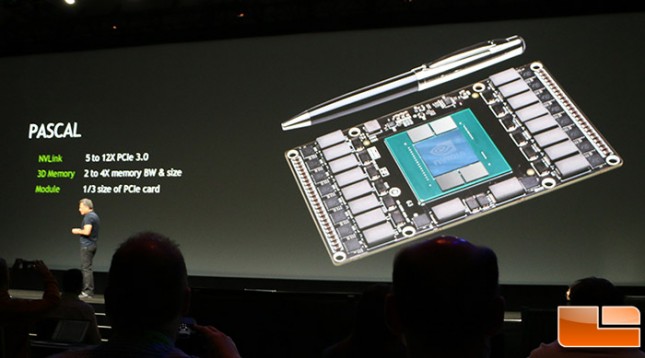
The new GPU that these technologies will debut on is Pascal. NVIDIA named this GPU after the French mathematician Blaise Pascal.
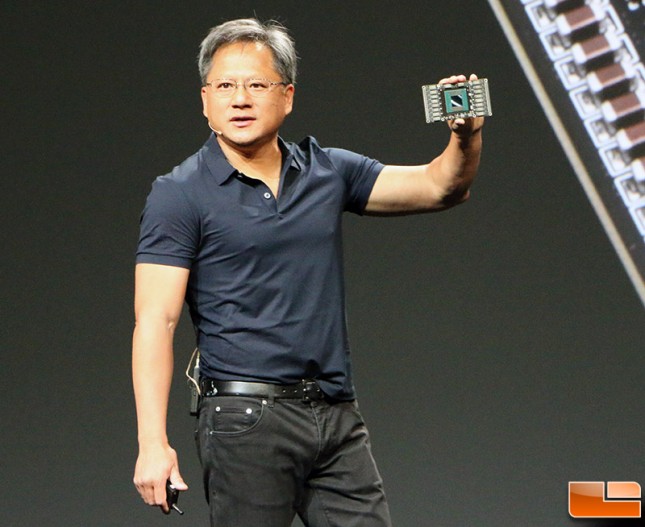
Jen-Hsun showed a Pascal GPU on a Pascal Module that is just one third the size of a regular desktop PCIe graphics card board. Here are the Pascal feature highlights from NVIDIA:
Next-generation family of GPUs will include three key new features: stacked DRAM, unified memory and NVLink.
- 3D Memory: Stacks DRAM chips into dense modules with wide interfaces, and brings them inside the same package as the GPU. This lets GPUs get data from memory more quickly boosting throughput and efficiency allowing us to build more compact GPUs that put more power into smaller devices. The result: several times greater bandwidth, more than twice the memory capacity and quadrupled energy efficiency.
- Unified Memory: This will make building applications that take advantage of what both GPUs and CPUs can do quicker and easier by allowing the CPU to access the GPUs memory, and the GPU to access the CPUs memory, so developers dont have to allocate resources between the two.
- NVLink: Todays computers are constrained by the speed at which data can move between the CPU and GPU. NVLink puts a fatter pipe between the CPU and GPU, allowing data to flow at more than 80GB per second, compared to the 16GB per second available now.
- Pascal Module: NVIDIA has designed a module to house Pascal GPUs with NVLink. At one-third the size of the standard boards used today, theyll put the power of GPUs into more compact form factors than ever before.
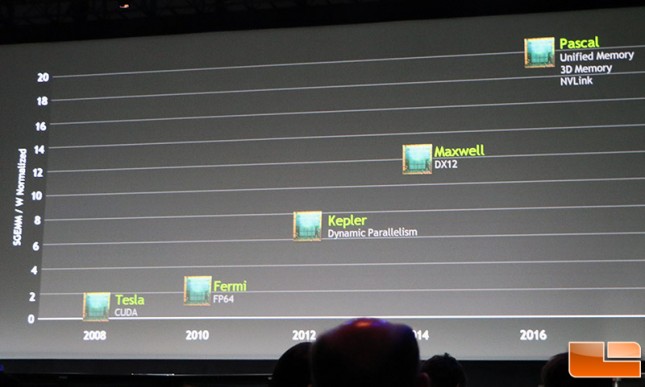
An updated GPU roadmap was then shown that showed that Pascal would be the successor to Maxwell. This came as a shock to us as we thought that Volta would be the successor to Maxwell. We asked NVIDIA PR and they said that Volta is still out there and will be the architecture after Pascal. From what we gather Pascal will be the ideal solution for smaller form factor solutions and that Volta will be used across the board. Not too much talk about higher-end Maxwell parts, but it looks like 2014 will still be the year for Maxwell.
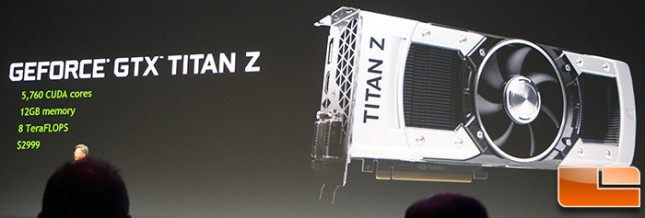
From there Jen-Hsun Huang announced the GeForce GTX Titan Z graphics card! This triple-slot graphics card features 5,760 CUDA Cores, 12GB of memory and capable of 8 TeraFLOPS of compute power. This card has an MSRP of $2,999, which breaks down to be about 50 cents per CUDA core. From what we can tel NVIDIA placed two Titan GK110 Kepler GPUs, each with 2880 CUDA Cores, onto a single PCB to create this dual-GPU monster!
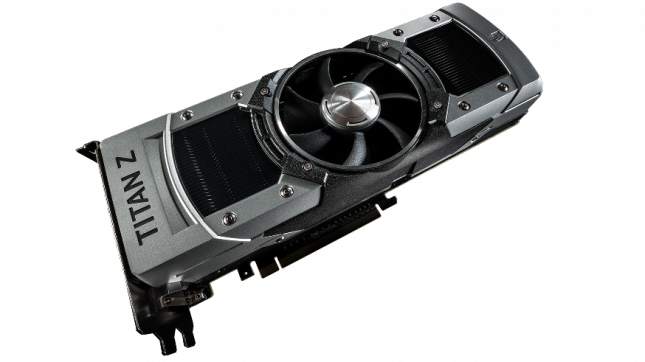
It is clear by the price and size though that the NVIDIA GeForce GTX Titan Z is aimed totally at graphics professionals, not for gaming although you could game on it for sure.
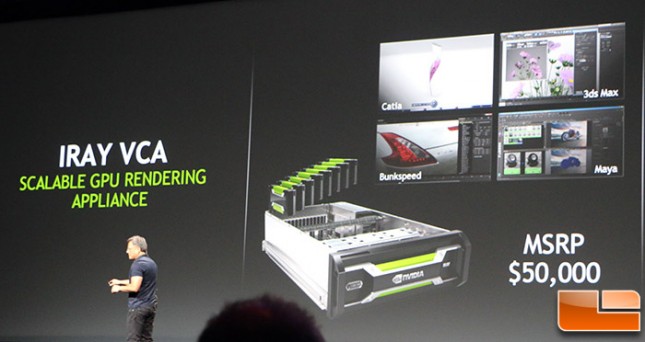
NVIDIA then showed off some NVIDIA GRID VCA hardware. The big announcement here was IRAY VCA, but we don’t really cover $50,000 scalable GPU rendering appliances here on LR.

Next up was the The NVIDIA Jetson TK1 development kit is a full-featured platform for Tegra K1 embedded applications. It allows you to have the power of 192 CUDA cores to develop solutions in computer vision, robotics, medicine, security, and automotive for $192 on pre-order. This little board can put out 326 gigaflops of compute performance and is ready for Android 4.4
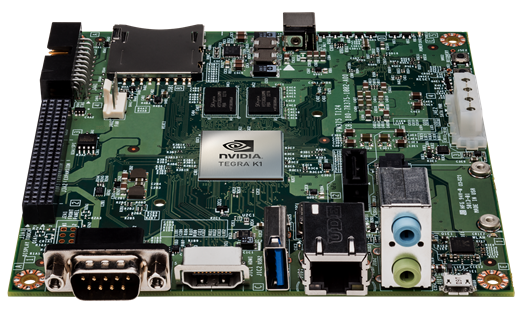
Jetson TK1 is the first developer platform for the Tegra K1, which was unveiled in January at the International Consumer Electronics Show, so if it looks familiar that is why. It includes 2GB memory and input/output connectors for USB 3.0, HDMI 1.4, Gigabit Ethernet, audio, SATA, miniPCIe and an SD card slot.
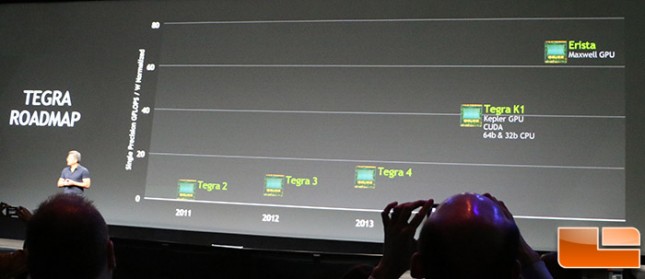
Jen-Hsun then announced that the successor to Tegra K1 will be the Erista, which is based on the Maxwell GPU architecture. Erista is scheduled for 2015.
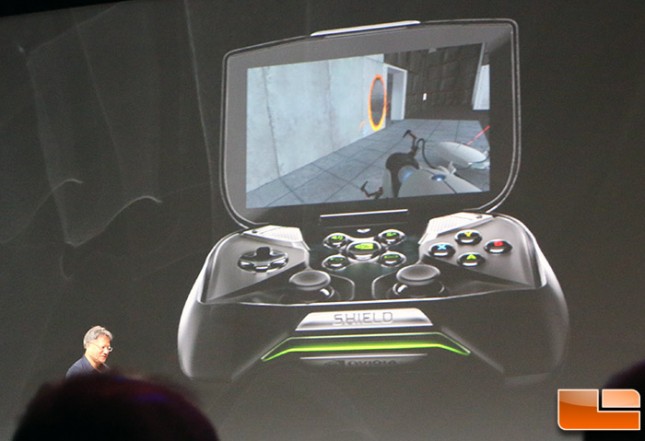
The keynote was wrapped up with a quick overview of the key released and then Jen-Hsun informed the room that everyone would be leaving with an NVIDIA Shield! The NVIDIA Shield is getting a fairly large OTA update on April the 2nd and NVIDIA announced that they are reducing the price down to $199 for a limited time. Be sure to check out our NVIDIA Shield news post today to see what all the changes are with the Shield!
